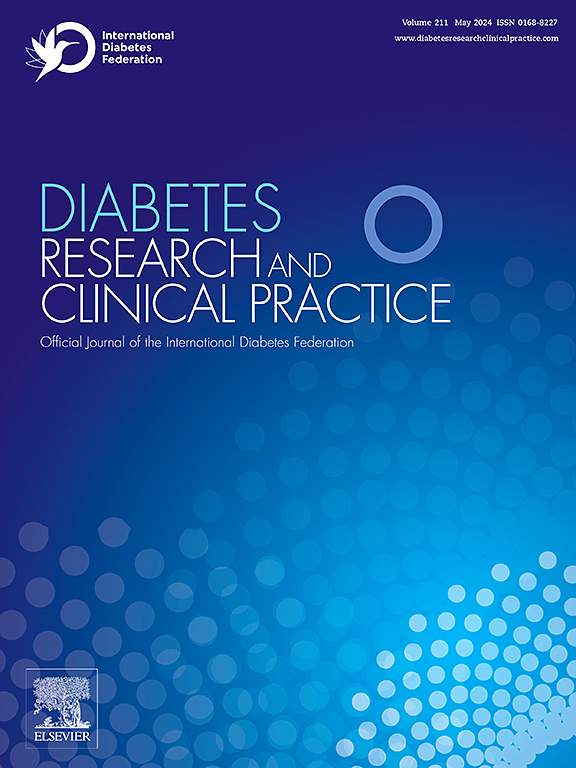Transitioning between automated insulin delivery systems: A focus on personalisation
IF 6.1
3区 医学
Q1 ENDOCRINOLOGY & METABOLISM
引用次数: 0
Abstract
Background
Automated insulin delivery (AID) systems are the most effective treatment for type 1 diabetes (T1D). When targets are not achieved, transitioning between AID systems is an option. The aim was to assess the impact of switching between systems on glucose control and user satisfaction.
Methods
A multicenter, cross-sectional analysis was conducted. T1D subjects who had switched between AID systems were included. Glycaemic control was compared before the switch, after 14 days, and after 3 months of use of the new system. The participants completed a satisfaction survey.
Results
96 subjects were included (age: 40.8 ± 11.5 years, 73 % female, HbA1c: 6.94 ± 0.68 % (52.3 ± 7 mmol/mol)). The AID systems evaluated included MiniMedTM-780G, Diabeloop-DBLG1, Tandem-t:slim-x2TM-Control-IQTM, and CamAPS-FX. GMI improved from 6.92 ± 0.49 % to 6.71 ± 0.37 % after 14 days and to 6.68 ± 0.36 % after 3 months and Time in Range 70–180 mg/dl increased from 70.53 ± 11.43 % to 75.73 ± 8.33 % after 14 days and to 75.65 ± 7.64 % after 3 months (p < 0.001 to baseline). The majority of the participants reported higher satisfaction. The factors that most affected satisfaction were the size of the system, the performance of the sensor, and the specificities of the control algorithm.
Conclusion
Transitioning between AID systems can enhance glucose control and user satisfaction without compromising glycaemic stability during the adjustment period.
求助全文
约1分钟内获得全文
求助全文
来源期刊

Diabetes research and clinical practice
医学-内分泌学与代谢
CiteScore
10.30
自引率
3.90%
发文量
862
审稿时长
32 days
期刊介绍:
Diabetes Research and Clinical Practice is an international journal for health-care providers and clinically oriented researchers that publishes high-quality original research articles and expert reviews in diabetes and related areas. The role of the journal is to provide a venue for dissemination of knowledge and discussion of topics related to diabetes clinical research and patient care. Topics of focus include translational science, genetics, immunology, nutrition, psychosocial research, epidemiology, prevention, socio-economic research, complications, new treatments, technologies and therapy.
 求助内容:
求助内容: 应助结果提醒方式:
应助结果提醒方式:


